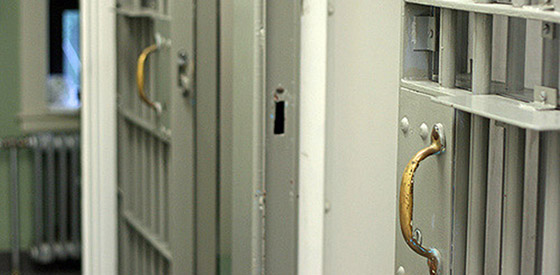
(Photo: JobsforFelons/Flickr)
When data from a Riverside County jail study were released last year, the county’s probation department responded by changing the way it did business. The report, conducted by CA Fwd’s Justice System Change Initiative (J-SCI), showed nearly half of the daily jail population was not in custody for a new crime. This number included individuals who returned to jail for a warrant, failed to make a court appearances or a violated their conditions of probation. With the data in hand, the Riverside County Probation Department turned its focus to this population.
Among the changes the probation department instituted to curb violations include The Bridge Program for young clients and the CORE (Communicating Openly Requires Engagement) program in which probation officers interacted with their clients via smartphones. Implementing these two new programs along with tracking data signaled a culture change within the department.
Another significant change in the department this year was to integrate the Lean methodology into its efforts improve efficiency through system change. J-SCI and Lean consultants have been working collaboratively with the department to maximize its efforts in this area.
The Lean method, originating from the Japanese manufacturing industry, evaluates and determines the value of current processes various stakeholders, then eliminates the unnecessary or redundant steps to streamline those processes.
“It’s been a good paradigm shift for the department because we’ve always done things because ‘That’s how we’ve done it,’” said Rudy Lovato, Riverside County Probation Department division director. “When we started with our Lean transformation, we really started scratching the surface and seeing why we do these things and started looking at all the processes that we have in place right now that have no value to anything that we do.”
During an initial training held over four days, representatives from various levels of management in the probation department evaluated the process also known as the ”value stream” of probation as well as probation violations. The department’s objectives in using the Lean method are to increase positive outcomes for clients, decrease the amount of time it takes to engage with clients and reduce the cost of services all while maintaining public safety. The team looked at each step and reviewed whether it was a necessary part of the process to achieve those goals, both from a probation perspective and from other stakeholders.
The team eventually identified dozens of steps that could be eliminated through changes in processes and the use of technology. The group was also able to estimate the value of time spent on extra steps in the violation process to then think about how to use those resources.
“We have so many inefficiencies and we’re trying to clear them and become a lot more efficient in the job that we do and provide service that the taxpayers can trust that we’re doing it to the best of our ability,” said Lovato.
“Streamlining can eliminate a significant amount of time spent on processing violations,” said Riverside County Chief Probation Officer Mark Hake. “That time will free up resources and can be spent engaging with clients and leading to reduced violations. Our goal through this process of system change is to maximize client success and lower jail populations.”
According to Lean consultant Ken Flaherty of The Kensei Group, “This value stream is a primary example of where we initiate at the middle level (of an organization). This is the middle management leadership within a certain division within the department. So they’re engaged and they’re learning. So when the chief (Hake) talks about ‘I want to change the culture and I want to use Lean,’ now they’re understanding the systems that need to be in place to achieve that.”
According to Lovato, the implementation of the Lean method is making a difference. “Staff are really excited because we’re making sure that they have a role in all the improvements that we’re making.” Some of the improvements include sending paperwork electronically and using electronic signatures, immediately saving time and energy. Other Lean improvements will take more time to implement and involve coordination from other departments. “It’s going to make their job a lot easier and as they do their job, they realize we have so much redundancy and inefficiency.”
As the department works toward continuous improvement, a core team meets weekly to discuss progress, learn about strategies and decide on the processes to change in order to achieve the goal of becoming a Lean organization.

